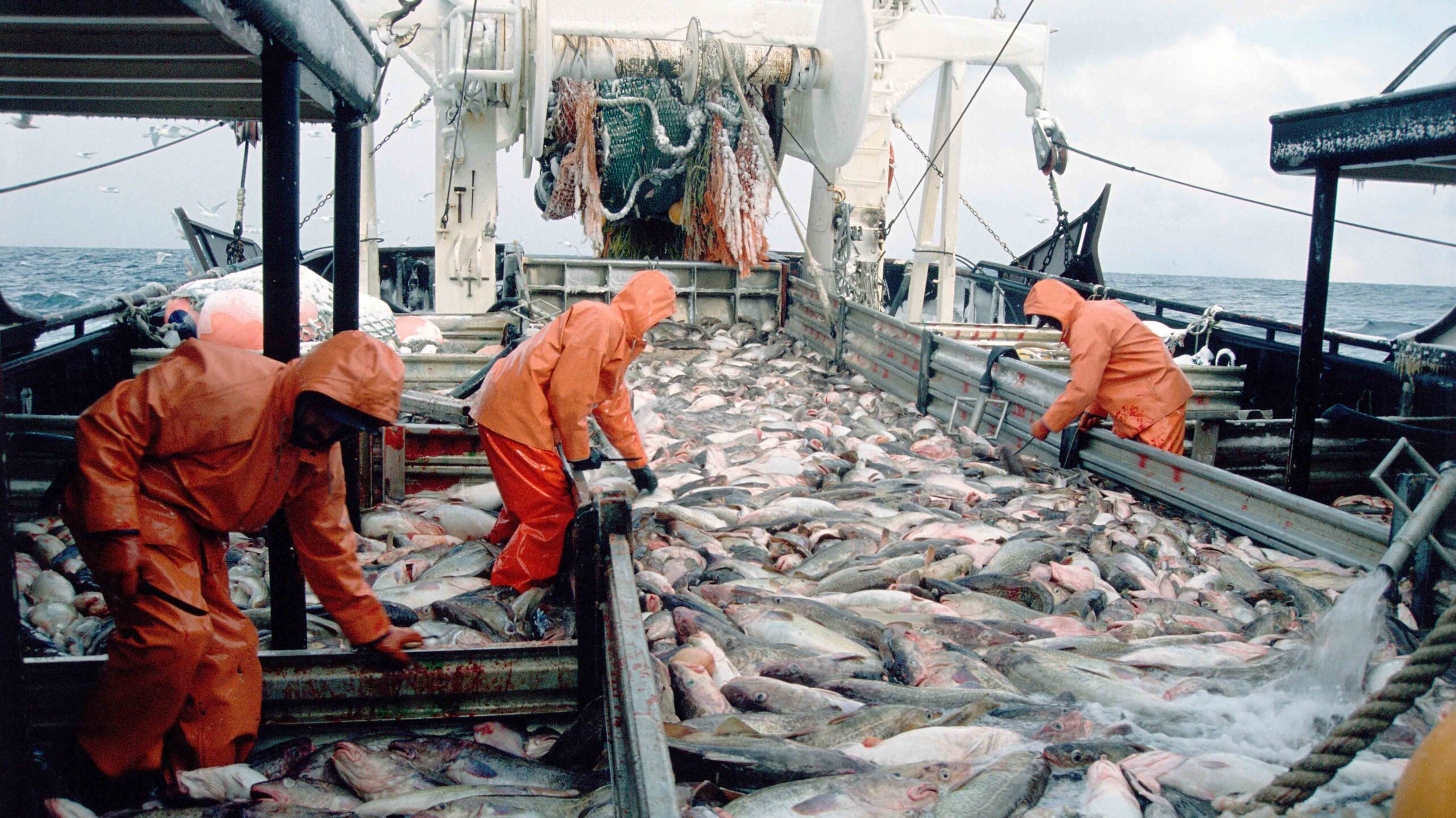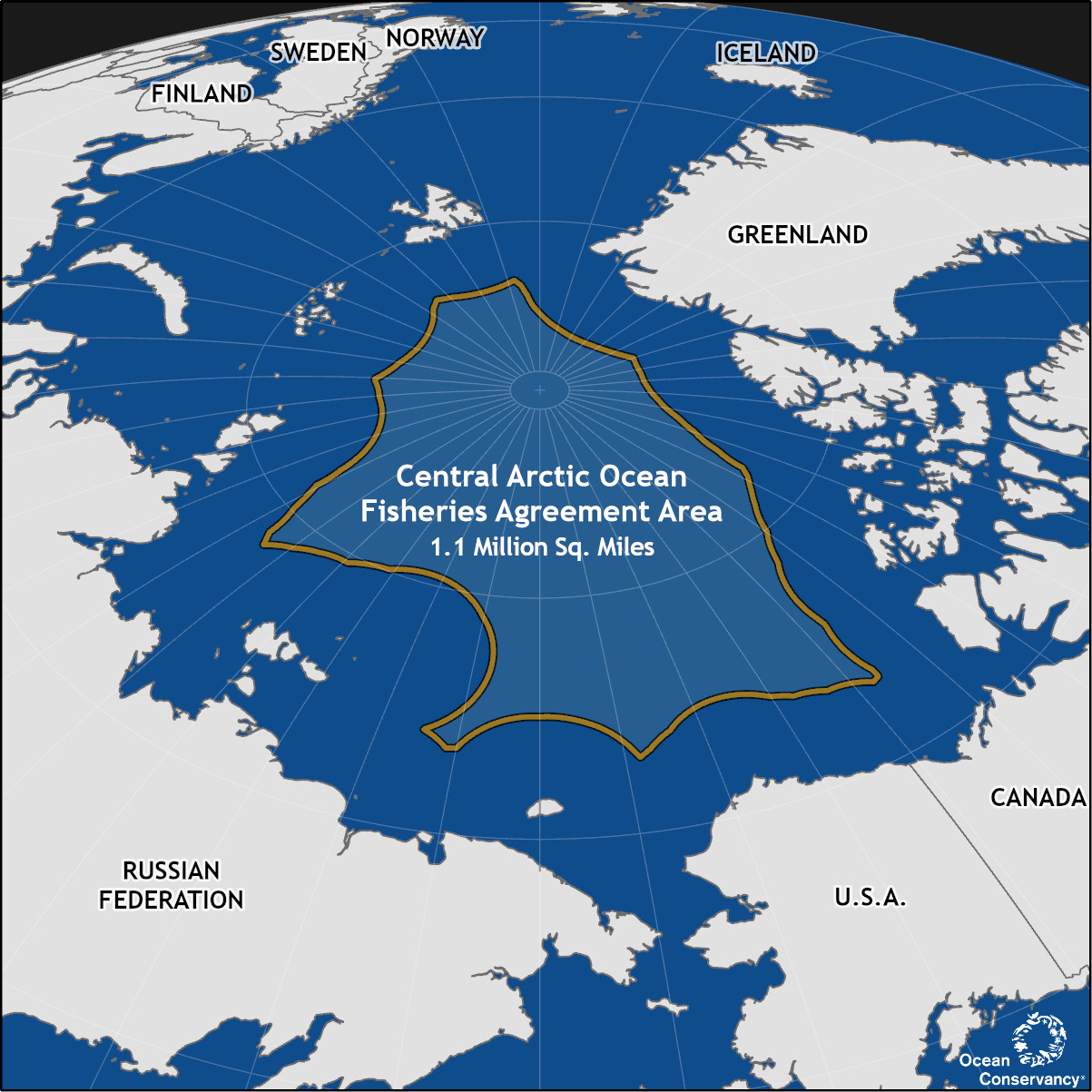5 Things to Celebrate in New Central Arctic Ocean Fisheries Agreement
Today, the Agreement to Prevent Unregulated High Seas Fisheries in the Central Arctic Ocean goes into effect

Today, the Agreement to Prevent Unregulated High Seas Fisheries in the Central Arctic Ocean goes into effect. Signed two years ago, the legally binding agreement has now been ratified by the United States, Russia, Norway, Canada, the Kingdom of Denmark (in respect to Greenland), Iceland, China, South Korea, Japan and the European Union.
Join us in celebrating five fantastic things about this international agreement for the Arctic:
- No commercial fishing in 1.1 million square miles—The vast Central Arctic Ocean surrounding the North Pole includes a large area beyond national jurisdiction. Covered in thick sea ice for all of human history until recent decades, satellite measurement showed in summer 2007 that 40% of the high seas area was open water. Scientists, Arctic Indigenous people, NGOs and industry began calling for precautionary action, eventually leading to negotiations by 10 countries to agree not to allow commercial fishing to begin for at least 16 years and to conduct research in this hard-to-reach sea to learn about its ecosystem values and how it responds to the climate emergency.

i - Gather knowledge before fishing—Never before has the international community agreed to conduct research before starting to fish a high-seas area. In the past, we’ve allowed fishing boats to exploit unfished fish stocks and then later asked scientists to tell us how those fish relate to the ecosystem and what levels of fishing are acceptable, often after a problem has emerged. The results in many areas have been dismal. Arctic residents and experts pushed for a different approach here that puts science, including Indigenous knowledge first, reflecting a better way of doing things.
- Indigenous knowledge and participation—The Arctic has been home to Indigenous people who have stewarded Arctic lands and water for millennia. Yet Indigenous people and Traditional and Indigenous knowledge are often left out of management decisions and science. This agreement reflects a different vision that prioritizes co-production of knowledge and includes both western science and Traditional and Indigenous knowledge. Throughout development of the agreement, Arctic Indigenous people were part of negotiating delegations from the United States, Canada and Denmark/Greenland. At this milestone moment, we recognize our visionary colleague, Alfred Jakobsen, from Greenland who promoted this agreement tirelessly but died before it came into force.

i - Cooperation between Arctic and non-Arctic countries—At a time when headlines proclaim the Arctic is a place for international conflict, this agreement shows that the Arctic remains a place for cooperation, even amongst countries like Russia and the United States. It also shows that non-Arctic nations like China, Korea, Japan and the European Union can recognize the special qualities of the Arctic and agree to precautionary policies designed to conserve the Arctic for its people and for the globe.
- Role of Ocean Conservancy and colleagues around the world—Our celebration is also personal. Our experts served on the U.S. delegation at all negotiations, held workshops and conversations in countries across the world, supported the views of Inuit experts and allies, and published maps and analysis to illustrate the need for international action. A special shout out to colleagues at the Inuit Circumpolar Council and the Pew Charitable Trusts for also walking the path to this agreement.
After this celebration, we will be getting right back to work. There’s more to be done to implement the agreement to ensure its promise of precaution and inclusion are met. And the agreement provides a model for other ocean areas—like the high-seas region of the Central Bering Sea—that need precautionary protection.
But, first, let’s acknowledge this day when the Arctic provides the world this bright moment.